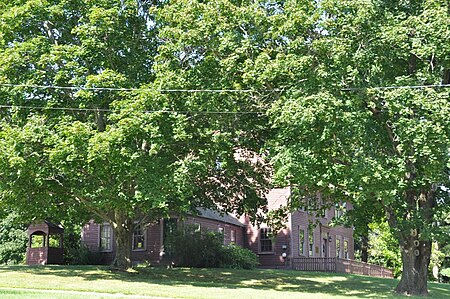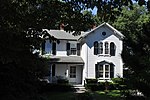Benjamin Thayer House
Buildings and structures in Blackstone, MassachusettsFederal architecture in MassachusettsGeorgian architecture in MassachusettsHouses completed in 1790Houses on the National Register of Historic Places in Worcester County, Massachusetts

The Benjamin Thayer House is a historic house at 200 Farm Street in Blackstone, Massachusetts. Built around 1790, it is the best-preserved property associated with the Thayer family, who were prominent landowners and one of the first Pilgrim families. Benjamin Thayer and his descendants lived and farmed here until about 1920, when the property, much reduced in size, was sold out of the family. The house and its surrounding 9 acres (3.6 ha) of surviving farmland was listed on the National Register of Historic Places in 2009.
Excerpt from the Wikipedia article Benjamin Thayer House (License: CC BY-SA 3.0, Authors, Images).Benjamin Thayer House
Farm Street,
Geographical coordinates (GPS) Address Nearby Places Show on map
Geographical coordinates (GPS)
| Latitude | Longitude |
|---|---|
| N 42.043888888889 ° | E -71.527222222222 ° |
Address
Farm Street 200
01504
Massachusetts, United States
Open on Google Maps










